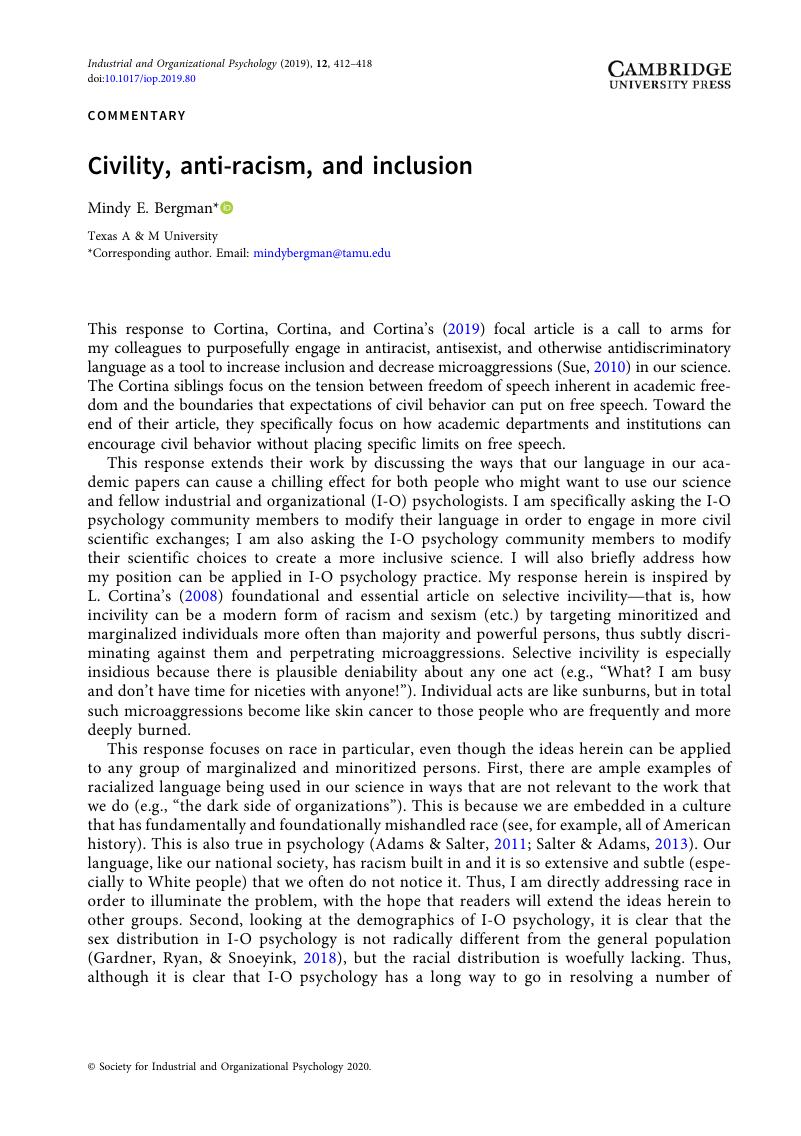Crossref Citations
This article has been cited by the following publications. This list is generated based on data provided by Crossref.
McCluney, Courtney L.
King, Danielle D.
Bryant, Courtney M.
and
Ali, Abdifatah A.
2020.
From “Calling in Black” to “Calling for Antiracism Resources”: the need for systemic resources to address systemic racism.
Equality, Diversity and Inclusion: An International Journal,
Vol. 40,
Issue. 1,
p.
49.
Dierdorff, Erich C.
and
Fisher, David M.
2022.
Problematic personalities in teams: Implications for performance trajectories and resilience to unexpected change.
Personnel Psychology,
Vol. 75,
Issue. 3,
p.
589.
Brownell, Katrina M.
Quinn, Audra
and
Bolinger, Mark T.
2024.
The Triad Divided: A Curvilinear Mediation Model Linking Founder Machiavellianism, Narcissism, and Psychopathy to New Venture Performance.
Entrepreneurship Theory and Practice,
Vol. 48,
Issue. 1,
p.
310.
MacLennan, Helen
and
Malka, S. Charles
2024.
The new post-pandemic workplace: on the relationship between relational civility and workplace social inclusion – a necessary condition analysis.
SAM Advanced Management Journal,
Vol. 89,
Issue. 4,
p.
297.



